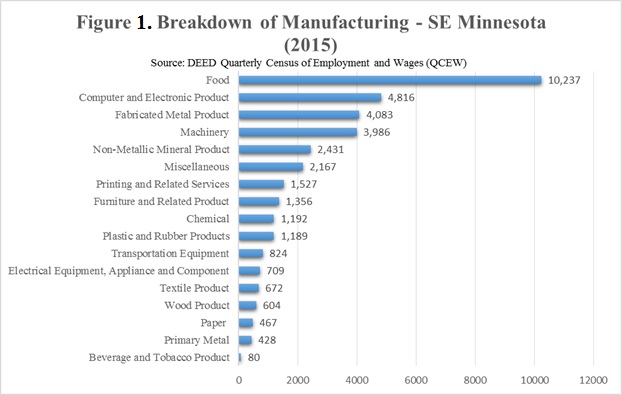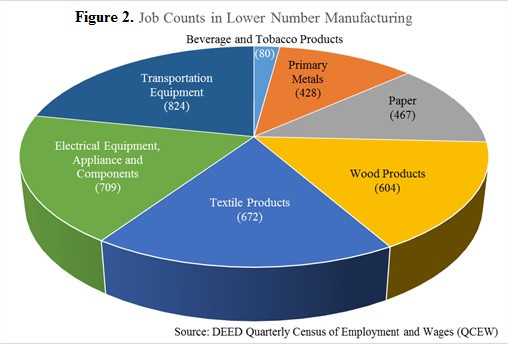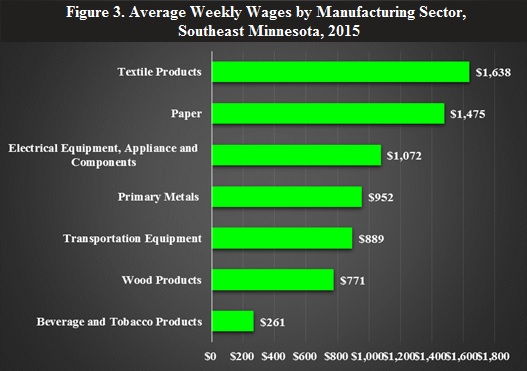 Southeast Minnesota is a health care and agricultural powerhouse. The region is home to the renowned Mayo Clinic and some of the world's most recognized food companies and brands.
Southeast Minnesota is a health care and agricultural powerhouse. The region is home to the renowned Mayo Clinic and some of the world's most recognized food companies and brands.
Advanced manufacturing is especially strong here, with machinery, chemicals, and electronics among the top products.
Want the freshest data delivered by email? Subscribe to our regional newsletters.
10/13/2016 9:47:04 AM
Southeast Minnesota has a large concentration of manufacturing with almost 16 percent of the total jobs in the region being in the industry. In all, there are 17 areas of manufacturing in Southeast Minnesota (see Figure 1).

The region is dominated by food manufacturing, which accounts for 27 percent of all manufacturing jobs. Other areas of manufacturing that have high numbers of jobs include computer and electronic products (12.7 percent), fabricated metal products (10.8 percent) and machinery manufacturing (10.5 percent).
Beyond those large sectors, there are other types of manufacturing that are also critical for the region but have smaller job numbers. Included in this group are transportation equipment, electrical equipment, appliance and components, textile product mills, wood products, paper, primary metals, and beverage and tobacco products. Transportation equipment has the highest number of jobs in this group with 824, while beverage and tobacco product manufacturing sees the lowest with 80 (see Figure 2).

These seven sectors contribute to the area’s economy with a combined total payroll of $218 million, which is just over 10 percent of the total manufacturing industry payroll. Additionally, some of these divisions are among the highest-paying in the manufacturing industry as a whole, including textile product mills and paper manufacturing, both of which pay more than the average weekly wages of the manufacturing industry as a whole. Additionally, four of the seven sectors pay more than the wages across all industries (see Figure 3).

In fact, according to regional data from DEED’s Cost of Living tool, the average weekly wages for all but one of these categories is higher than those needed to cover the basic cost of living needs for the typical family, ranging from 23 to 162 percent higher.
So while these seven manufacturing sub-sectors may not be a dominant force in regards to jobs in the Southeast region, they’re still important. After all, they create products – textiles, paper, beverages and more – that greatly enhance the quality of life in the region.
Contact Mark Schultz.